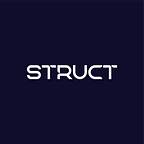Road to Struct V2: Introducing ERC-4626 Vaults
Welcome to another edition of the blog where we share the most relevant updates at Struct!
This time we are excited to announce that we are working to launch Struct V2, an update which will revolutionize the way our vaults work!
Fasten your seatbelt, this blog edition is dedicated to get everyone up to speed on ERC-4626 vaults, a token standard which promises to improve the composability of vaults across DeFi. The ERC-4626 vaults will be instrumental in the deployment of Struct V2, which will bring significant advancements in terms of scalability, decentralization, and capital efficiency.
The ERC-4626 standard is not only employed within Struct to streamline vault operations but also opens up new possibilities for growth and innovation in the DeFi space.
This article provides an introduction on ERC-4626, its benefits for Struct, and how it will be leveraged to launch new vaults.
Why ERC-4626?
Imagine if all vaults across DeFi were standardized and compatible across each other.
This is exactly what the ERC-4626 standard does. The ERC-4626 is a token standard tokenizing vaults. Vaults act as smart contracts, taking token deposits, using these tokens, and providing rewards to the users who deposited funds.
The importance of this standard lies in the standardization of the implementation of vaults, allowing any application, tool, or plugin to seamlessly build on top of any ERC-4626 vault, boosting vault composability across DeFi.
In turn, the complexity of integrations diminishes, while benefiting the overall security and UX.
Many protocols have already implemented ERC-4626 vaults, and have formalized their openness to collaboration within the ERC-4626 alliance, with the scope of supporting the development of ERC-4626 vaults.
Notable members include Aave, Morpho, Superform, Gearbox, Frax Finance, Balancer, Beefy, Yearn, Sommelier and many more.
How does this standard fit within Struct Finance?
Struct V2: ERC-4626 Vaults
The behaviour of users in DeFi has changed, adapting to the shifting landscape.
For instance, the movement of capital across protocols has become more frequent. Users are hopping across chains, looking for the best yield opportunities.
Within this context, the creation of self-standing, isolated vaults can prove to be a strong enough friction, pushing users away. On the other hand, the creation of composable vaults increases the scope of these products and opens up for new use cases to be built on top of them. Maintaining this flexibility will prove to be fundamental in order to capture the mindshare of users.
Struct leveraged the ERC-4626 standard to support the seamless integration of our vaults across protocols, reducing development and integration overheads and boosting collaboration between Avalanche and the broader multi-chain ecosystem.
In turn, Struct will also benefit from broadening the range of products available through integration with any ERC4626-compliant contracts.
Examples include the creation of interest rate products tradeable as ERC-20 tokens on automated market makers (AMMs) across multiple EVM-compatible chains.
All the vaults on Struct V2 will be based on the ERC-4626 standard.
Struct V2 will launch with a selection of vaults supporting diverse baskets of assets, using the ERC-4626 standard to ensure compatibility and functionality across all offerings, including:
- Stablecoins
- Restaking tokens
- Single side staking
- Strategy-specific vaults
- Real-World-Assets
How will ERC-4626 benefit Struct users?
The implementation of ERC-4626 in Struct V2 will simplify the user interface for deposits and withdrawals, and reduce the complexity of managing yield-generating strategies.
This leads to better scalability of the strategies, reduced risk of errors, and enhanced capital efficiency.
Furthermore, users and protocols will be able to create interest rate products and manage their own vault on top of any ERC-4626 vaults.
The process will be permissionless, with stakers being able to create their own factories, allowing users and protocols to create and customize products.
On Struct V2, users will be able to customize their:
- Exposure: in terms of platform, and token type.
- Risk: in terms of leverage and protection size (the size of one tranche relative to the other), and hurdle rate (the rate that the senior tranche receives at maturity).
- Duration: term ( how long the funds will be deployed) and subscription duration (how long the vault will be open for deposits).
With “factories” deployed across EVM-compatible networks and decentralized front-end, users will be able to create bespoke financial products tailored to specific needs and strategies with unprecedented flexibility.
Moving Forward
The integration of ERC-4626 vaults is a significant step towards increasing the composability and fungibility of Struct V2 vaults within DeFi.
While the initial phase of our protocol was meant to establish a product-market-fit and lay the infrastructure for our interest rate products, Struct V2 is meant to capitalize on this infrastructure and perfect it by making it composable and adaptable.
Struct V2 opens the doors for users and protocols to build customizable products, with much greater flexibility and a broader scope.
All of this will be composable across all ERC-4626 vaults, thanks to the new vault design.
During the upcoming weeks you can expect more details including which vaults we will launch first and when they will go live.
In the meantime, follow us on Twitter as we continue sharing more on the importance and potential of ERC-4626 vaults!
